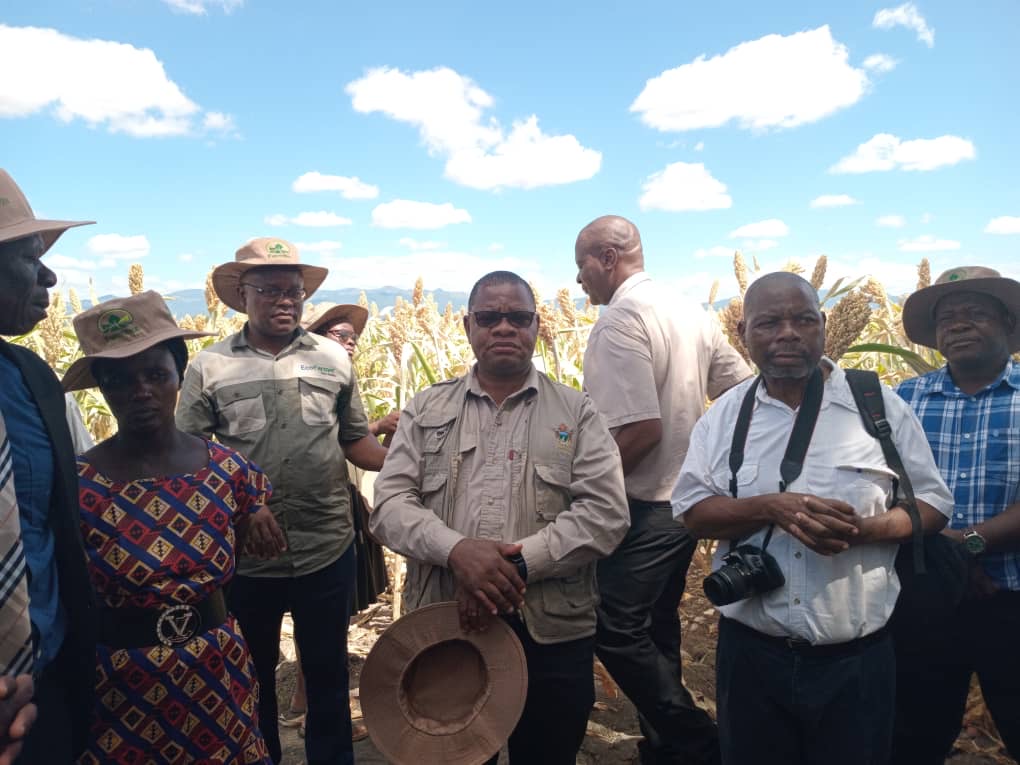By Edward Makuzva
In an era where small-scale farmers face mounting challenges—from market volatility to limited access to resources—the Grain Swap Initiative emerges as a game-changing solution.
Designed to empower agricultural communities, this innovative program fosters a sustainable system of grain exchange that bypasses traditional market barriers. By enabling farmers to trade surplus crops directly with one another, the initiative not only strengthens local trade networks but also promotes food security, reduces waste, and boosts rural economies.
At its core, the Grain Swap Initiative is more than just a trading platform—it’s a movement toward self-sufficiency, resilience, and equitable growth in the agricultural sector.
Speaking at the Sorghum Field Day in ward 19 Utete, Muzarabani in Mashonaland Central Province, Tuesday, Permanent Secretary at the Ministry of Lands and Agriculture, Fisheries, Water and Rural Development Professor Obert Jiri reaveled that the program aims to empower farmers with the tools they need to adapt, diversify, and thrive, while also contributing to national food security and reducing reliance on maize in vulnerable regions.
Prof Jiri highlighted that this strategic intervention allows maize farmers to trade their grain for traditional grain inputs such as sorghum, millet, and rapoko —supporting a gradual shift towards drought-tolerant crops better suited to Zimbabwe’s changing climate.
The Grain Swap Initiative, spearheaded by the Ministry of Lands, Agriculture, Fisheries, Water and Rural Development in partnership with the Grain Marketing Board, has significantly transformed Mugoniwa’s role and participation in farming.
Once limited by market access and the unpredictability of crop sales, Mugoniwa can now fully engage in agriculture with renewed purpose and confidence, accessing a wide variety of grains while cutting costs by eliminating the middle man.
“Through this initiative, farmers are encouraged to specialize in fostering crops best suited to their local climate and soil conditions, improving both yield and quality. Instead of being constrained by market demand or middlemen, they can now trade their surplus harvests for other essential grain varieties they may not produce themselves. This Grain Swap Intiative-
based system not only ensures dietary diversity and food security at the household level but also fosters a sense of community and collaboration among farmers.”
Furthermore, “The Grain Swap Initiative is reshaping how rural farmers like Mugoniwa approach agriculture—transforming it from a struggle for survival into a sustainable, empowering livelihood”, Prof Jiri explained.
“Farmers are now engaging in crop exchange at the Grain Marketing Board (GMB), allowing for more flexibility and diversification.
“For example, if a farmer has 2 tonnes of sorghum, they can now trade it with another farmer who has an equivalent amount of maize. This system enables farmers to access the types of crops they need for consumption, resale, or further without necessarily relying on cash transactions. It also promotes a sense of cooperation and resource sharing among farmers within the agricultural community.”
Moreover, “Farmers no longer have to stress about finding immediate buyers or markets for their produce. Through the grain swap initiative, all they need to do is take their harvested crops to the Grain Marketing Board (GMB), where they can exchange them for the type of grain they need—without the use of money. This system provides flexibility and convenience, especially for those who may not have access to cash or formal markets”,Prof Jiri added.
Prof Jiri highlighted that there is now less pressure on maize farmers. Many are beginning to shift towards the cultivation of traditional grains such as sorghum and millet, which are more drought-resistant and suitable for changing climate conditions. Despite this shift, maize remains readily available at the GMB for those who still require it, ensuring food security and variety for all farming households.”

